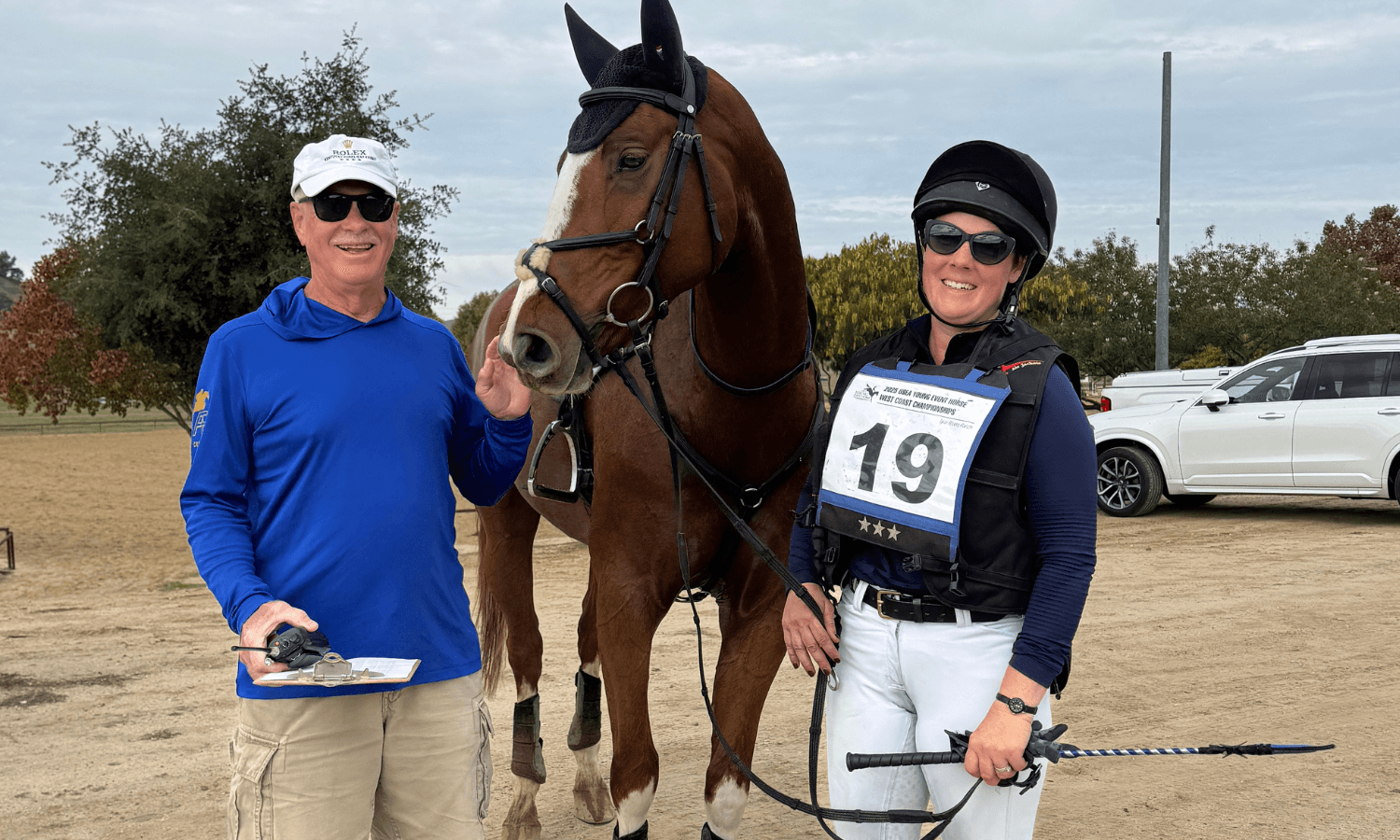Whatever the Weather: Caring for Your Horse on the Road and at a Competition
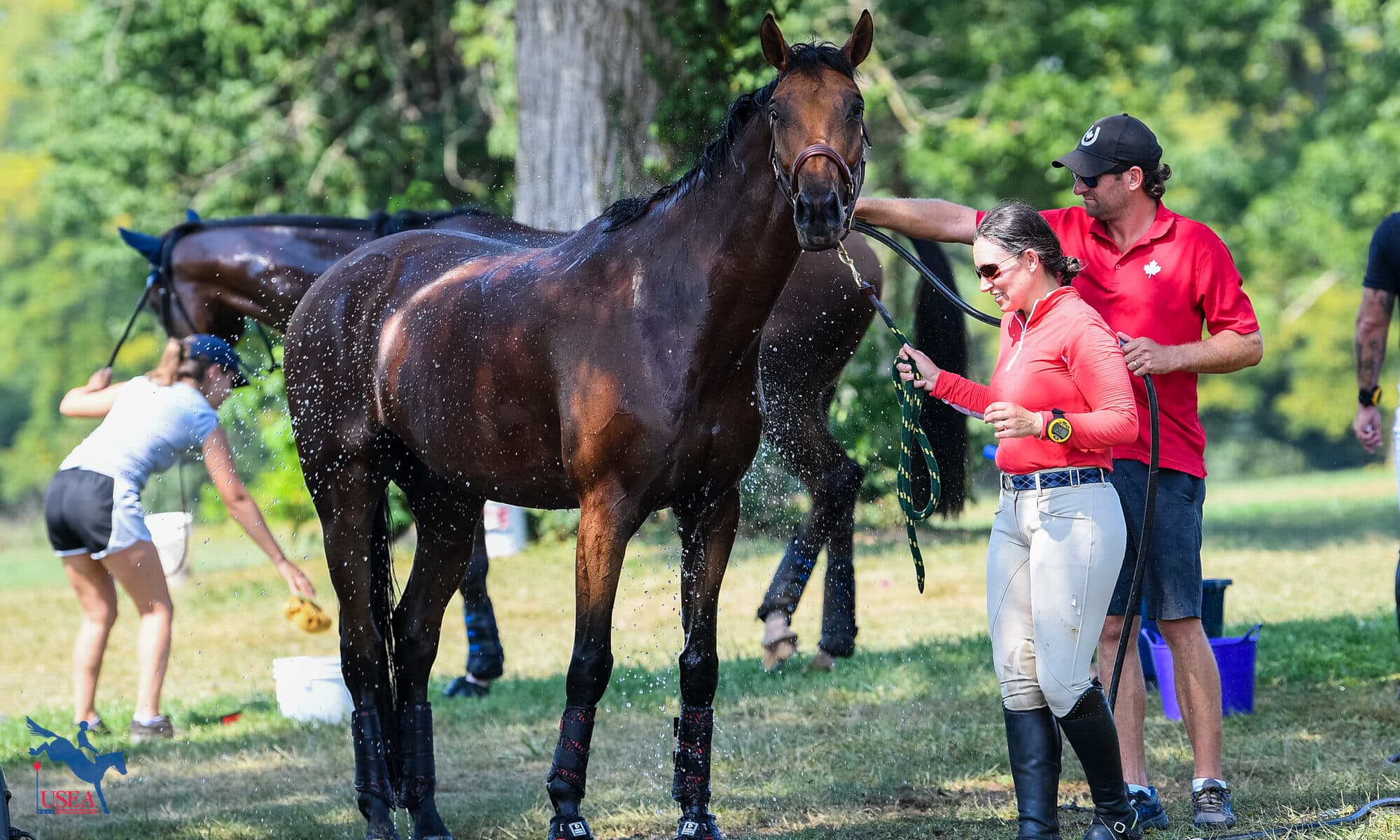
It’s common to see a horse trailer trucking along with a sign on the back stating, “Precious Cargo!” or “My best friend is in here!” Traveling long distances to competitions is the norm for many eventers. When traveling between climates, like going from the sandy soil of Aiken, South Carolina, to the rich Kentucky bluegrass, our horses have to adjust to a whole new set of environmental conditions quickly. As horses are delicate creatures, this can give rise to problems in places like their gut, skin, and airway. How we care for them as we travel and once we reach our location can mitigate a lot of these issues.
Dr. Chad Davis of Davis Equine Sports Medicine and the Virginia Equine Rehabilitation Center in The Plains and Warrenton, Virginia, works with clients all over the world and is very familiar with the challenges of moving horses between climates. “A lot of factors play a part in how well the horse tolerates it,” Davis said. “I think there's some pre-existing conditions that we look at, because it appears, as horses get older, they don't tolerate the changes in climate as readily as maybe a young horse does. So, age plays a part in it. Breed plays a part in it, and maybe even the sex of the animal might. Because sometimes those hot mares or those hot stallions get worked up in particular during travel.”
Dr. Davis also notes that older horses, those over 15, are more likely to have metabolic issues, including Cushing’s, which can negatively influence the horse’s ability to regulate their body temperature. This really comes into play when moving between climates in a short period of time.
“A lot of those horses go from cold to hot in drastic periods of time, a plane flight, maybe a couple days on that horse trailer. You run into scenarios where they are in heat and humidity, they may or may not be body clipped, and they’ve forgotten how to sweat. Temporary anhidrosis [the loss of the ability to sweat] occurs,” Dr. Davis said.
Each horse's individual medical history plays a massive role in how well they tolerate these environmental changes. Moving between climates stresses the horse's metabolic system and impacts its ability to first perform and then recover.
“For example, let’s say you’re taking a horse from Florida to Colorado. It's accustomed to Florida allergens, the Florida hay, and you take it to Colorado in February,” Dr. Davis said. “It's going to be cold no matter what blankets it has. Now, the horse is having to thermoregulate, and it may not have as much body fat on it, and it probably doesn't have a hair coat, and so it's going to have to work harder. All of this extra metabolic work, whether it's because they have a respiratory disease or they have a metabolic disease, or literally, the anatomy of the horse, like it's been body clipped. It's a skinny horse, etc. all play parts and doesn’t allow the horse to recover at the rate it normally would for the level of work it probably was doing wherever it started from.”
The opposite is also true.
“If you are in upstate New York, and you're going to go to Florida, and it's 60 degrees in New York, and it's 105 degrees in Florida, your horse is probably not going to acclimatize like you hope it would, especially over a horse show weekend,” Dr. Davis said. “That's probably not going to be enough time. It'll probably do the best it can, but it's probably going to struggle, compared to the horse that is currently in Florida.”
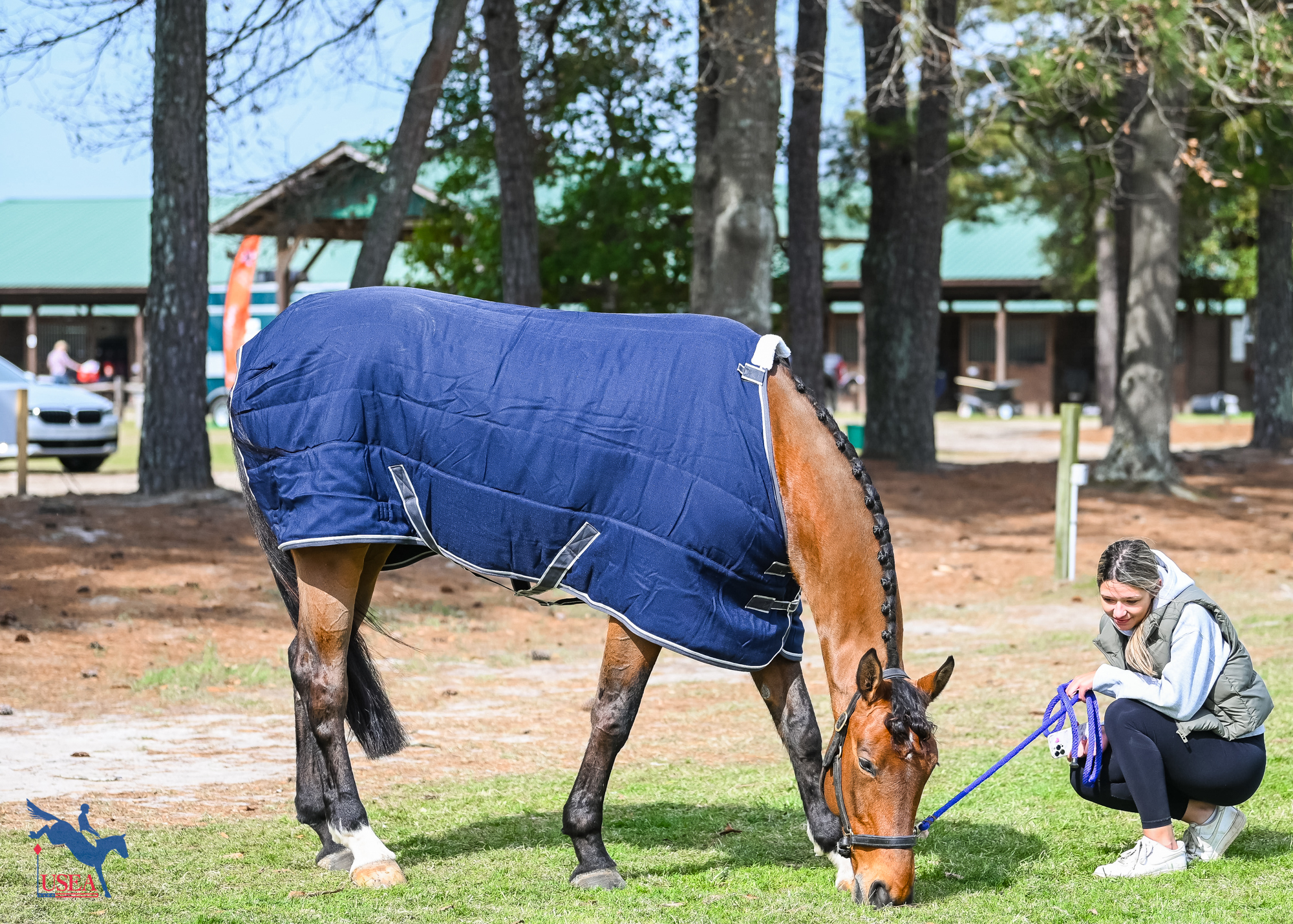
As the guardians of our horses, we have to be proactive in caring for them before, during, and after we travel to help mitigate the risks. Dr. Davis believes in taking a big picture view of the horse’s health and caring for them from the inside out.
Few equestrians are better at moving horses between climates than a five-star groom. Erin Jarboe grooms for Will Coleman. Coleman summers in Charlottesville, Virginia, before heading down to Ocala, Florida, for the winter. Jarboe plays an instrumental role in ensuring all the horses make the transition successfully. Of a particular concern is the change in the nutrition of the grass.
Savannah Gwin grooms for five-star eventer Tamie Smith, who is based in the dry heat of California. Gwin is very familiar with the process of moving horses back and forth from the East coast to the West Coast as Smith regularly makes the trip. Jarboe and Gwin are both cautious about what the horses eat when they reach a new environment.
“We normally bring our own hay for as much of the trip as we can, so we try to keep them on the same type of feed,” Gwin said. “We can't always bring it for the whole trip, depending on how many horses and how long we're going. But we've been pretty lucky the past couple times where we've brought in most of our own feed.”
Gwin also says that hoof care becomes a particular concern when moving from the dry, sandy terrain of California to wetter environments, like Maryland or Florida. “Their feet go through a lot of changes with the different climates, because it's super dry here, so their feet actually shrink up a little bit, but then they go over [to the East Coast] and it's quite moist, so then their feet tend to expand. You have to time everything perfectly. You either have to be over there long enough for them to go through the change, or not long enough to even start the change with their feet, because they can get sore.”
Not only is a different climate often difficult for horses to adjust to, but long-distance trailering to competitions in different climates can give rise to a whole host of various issues. Dr. Davis, Jarboe, and Gwin all agree that there is a science to trailering horses over long distances safely.
Airflow is step one to a healthy horse after a long trip. Dr. Davis noted that diesel trucks may be fuel-efficient for long trips, but you have to be certain that exhaust is not going straight into your trailer.
“Having airflow is important even when it's cold out,” Dr. Davis said. “The horse's average body temperature is 99.5 degrees. Now you’re trapping them in a box and sealing the windows. You've got one or two in there, and they're both breathing the same air, and they're putting out all that hot, humid air. Now the trailer is full of hot, warm air that's stagnant. That doesn't sound like a very good idea.”
Both Jarboe and Gwin turn to fans to increase the airflow in their trailers on long trips. “Our trailers have fans,” Jarboe said. “We try to keep all the windows open as much as possible, just to allow for more ventilation, even if they need to wear a sheet, so that we can keep the windows open so they have more airflow, we'll do that.”
Gwin adds that unclipping the horse's head can also be beneficial for their airway, as this position reduces bacteria in the lungs and can prevent respiratory disease. “On long trips, we will always unclip their head so they get their heads down anytime we stop for gas and make sure that they're able to eat off the floor for a little bit.”
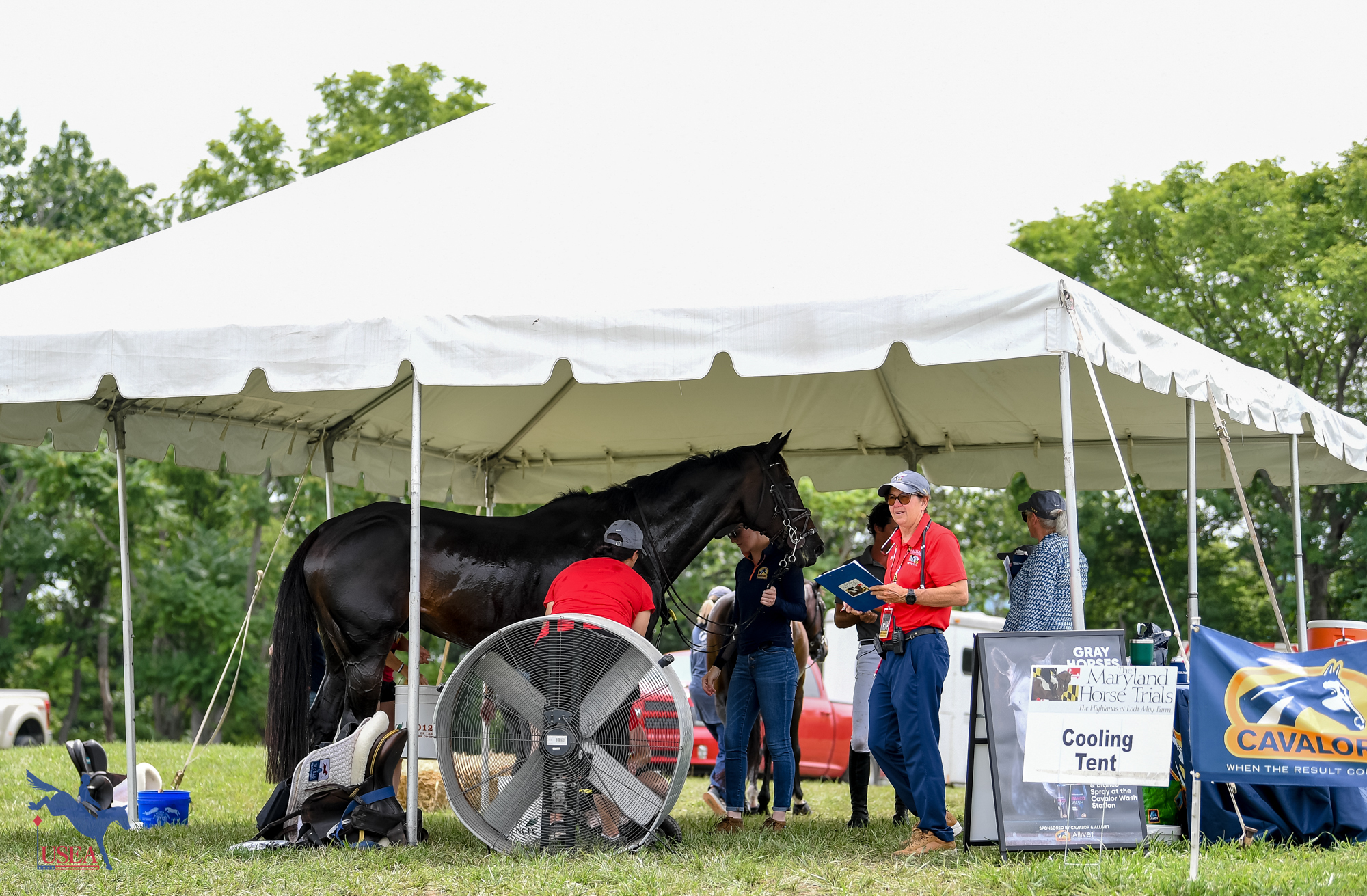
According to Dr. Davis, the quality of your hay plays a crucial factor in your horse’s respiratory health while traveling. “If you take it as a general rule, I can’t think of a single horse that doesn't benefit from having steamed hay. Even nebulizing horses before they get on the trailer, that is a great control point [for their lung health]. I cannot think of a horse that's in competition that would not benefit from having steamed hay on the trailer and then having saline nebulization before trailering.”
If you’re unable to steam your hay, Dr. Davis says soaking it the night before a long trip is the next best thing. “Soak your hay overnight, take it out of that bucket, and then that's the hay you hang inside the trailer, because now you're reducing mold and fungal particles inside their air, inside their box.”
Heat is also a factor when trailering horses to competitions during the summer months. Unfortunately, very few trailers have air conditioning (although Dr. Davis did say he’s seen portable air conditioners installed inside trailers), and a metal trailer, particularly a dark-colored one, can start to feel like an oven. Both Jarboe and Gwin said they’ve gotten used to traveling at night on hot days.
“We drive through Vegas, which can get really hot, so we try to drive through the night when it's really hot. But every now and then, things happen, and you end up somewhere where it's hot. We will put ice on the trailer, and we just keep a very close eye on the horses,” Gwin said.
When traveling between changing climates with drastically different temperatures, Gwin’s go-to layer is ceramic sheets. “We have the option to turn the fans on and off, and then we will put sheets on them and take them off as needed,” Gwin said. “We keep a close eye on the temperature as we're traveling. We have these ceramic sheets that are our go-to for the trailers, because they're warm, but they aren't super thick, and they're still breathable.”
One aspect of trailering that is often overlooked is its impact on the horse’s hooves. “I routinely recommend Soft Ride boots for those horses who travel,” Dr. Davis said. “All of our horses who travel to Europe wear them as a way to make sure that the horse won’t have a tendency to be foot sore. They're bracing the whole time, going from truck and trailer into a shipping container, then onto a plane, and then onto another box, a lorry, etc.”
The old saying, “You can lead a horse to water, but you can’t make it drink,” particularly applies to the endlessly frustrating business of getting a horse to drink while traveling. “Ideally, what you want to do is get them to a spot where they have something that tastes good, that they want to continue to drink,” Dr. Davis said. “Horse Quencher is a product that is inexpensive, and you can add it to your existing water. And then there's other products, like Gallagher's Water, that you can add to that as well. Options also include bringing your own water.”
Competing in different environments means that the care for our horses has to change, particularly after cross-country. Dr. Davis has come across several different issues that horses can develop after cross-country due to the weather, especially on cold days. “You can’t let a horse that goes out on a cold day come in and then start getting full body shivers, because now it's exhausting energy that it's not using for recovery to keep itself warm. That’s how tying up can happen.”
As a veterinarian for many international competitions, Dr. Davis says one of the biggest mistakes he sees is that horses are kept in the vet boxes for too long. “The goal in any of these 10-minute boxes that you have at the FEI level is to get them in and out quickly so they get to the better care back at the barn where the horse can go and take a drink and take a breath and get a bite and get a chance to recover.”
When competing on raw, rainy days, Jarboe keeps plenty of layers on hand for after cross-country. “You want to get them cleaned off quickly, and then usually you just have to be quick to kind of bundle them up with a knit on the bottom, so that they have some airflow. And then just layering is really important. You usually want either a fleece or a wool on top, so that the moisture is just getting wicked off. And then you need to top that with a sheet, if you have to walk around or something. Once they're dry, it's important to get those rugs switched out so that they're not staying in the wet rugs.”
Like Jarboe, Dr. Davis is also a fan of layering on cold days, particularly with a scrim sheet. “Scrim sheets are an important tool on those cold days, because they can provide some insulation so the horse will get a little bit warm, but it's controlled warmth, and you're not allowing the muscles to get too tight. It's important in those cold days after they get done, after cross-country, that you keep them walking more than you probably would on a warmer day.”
Dr. Davis recommends using cold well water, instead of ice water, in colder environments after cross-country. “You do need to still take the time to get their body temperature coming down, but not shock the system so they go into shiver mode, because now you put all this cold water on them, the environment is cold, and now it's being amplified. You need to dissipate the heat quickly, and then get them back into their stalls quicker.”
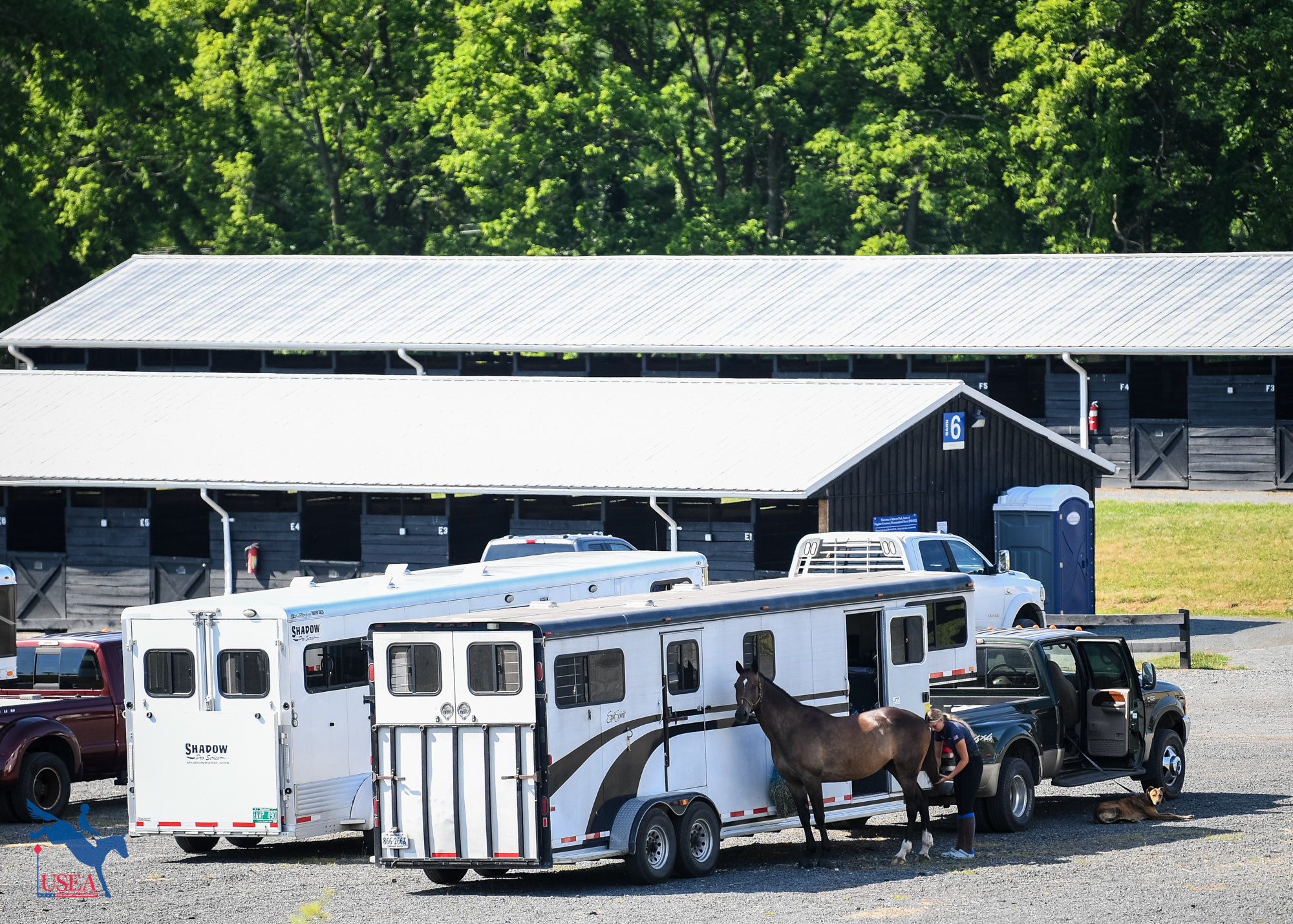
Across the nation in California, Gwin has all the tips and tricks for competing in the hot desert heat. “If it's super-hot, we will sometimes put rubbing alcohol in a bucket with some water and a sponge. And we might even sponge them down before they go cross-country, just to keep them cool. We might even have the bucket with the rubbing alcohol in the vet box for after, when it's super-hot.”
Dr. Davis also recommends the use of ice towels and constantly flowing water in hot environments. “You can put ice towels on them, but you have to flip them over pretty quickly. You take towels in ice buckets with water, and you put them in there and put them on the horse. It's cold, but it will dissipate. Flip the towel over, and then you have to put the towel back in the water,” he said.
He also recommends taking advantage of hoses, as available, and fans instead of dumping ice water on a horse and walking it excessively in hot environments. While you still want to move the horse, there’s no need to walk it to the point that its body temperature goes back up.
“You put them in front of a fan so it can move the water on their body, and kind of dissipate the heat, because the airflow across the water acts like air conditioning, right?” Dr. Davis said. “And so, if you can have a horse in front of a fan on a hot day, and it never moves from the fan, and it's got constant flow of water over it, that horse is going to recover better than the horse that gets the water on, gets scraped off, and continues walking around. There's no need to go and be excessively scraping the horses off so rapidly.”
While there may be many different methods to caring for competition horses as they travel across the nation, one thing holds true: you have to know your horse inside and out in order to get them to their destination safely and compete successfully.
“You just have to know what to look for and know your horses and be really on top of everything,” Gwin said. “Track their water intake and take their temperatures multiple times a day, and keep a close eye on them through all of it. You have to know your horse and know what's normal for your horse, so you can keep track of when something seems out of the ordinary for them. Act on it before it becomes a problem.”


